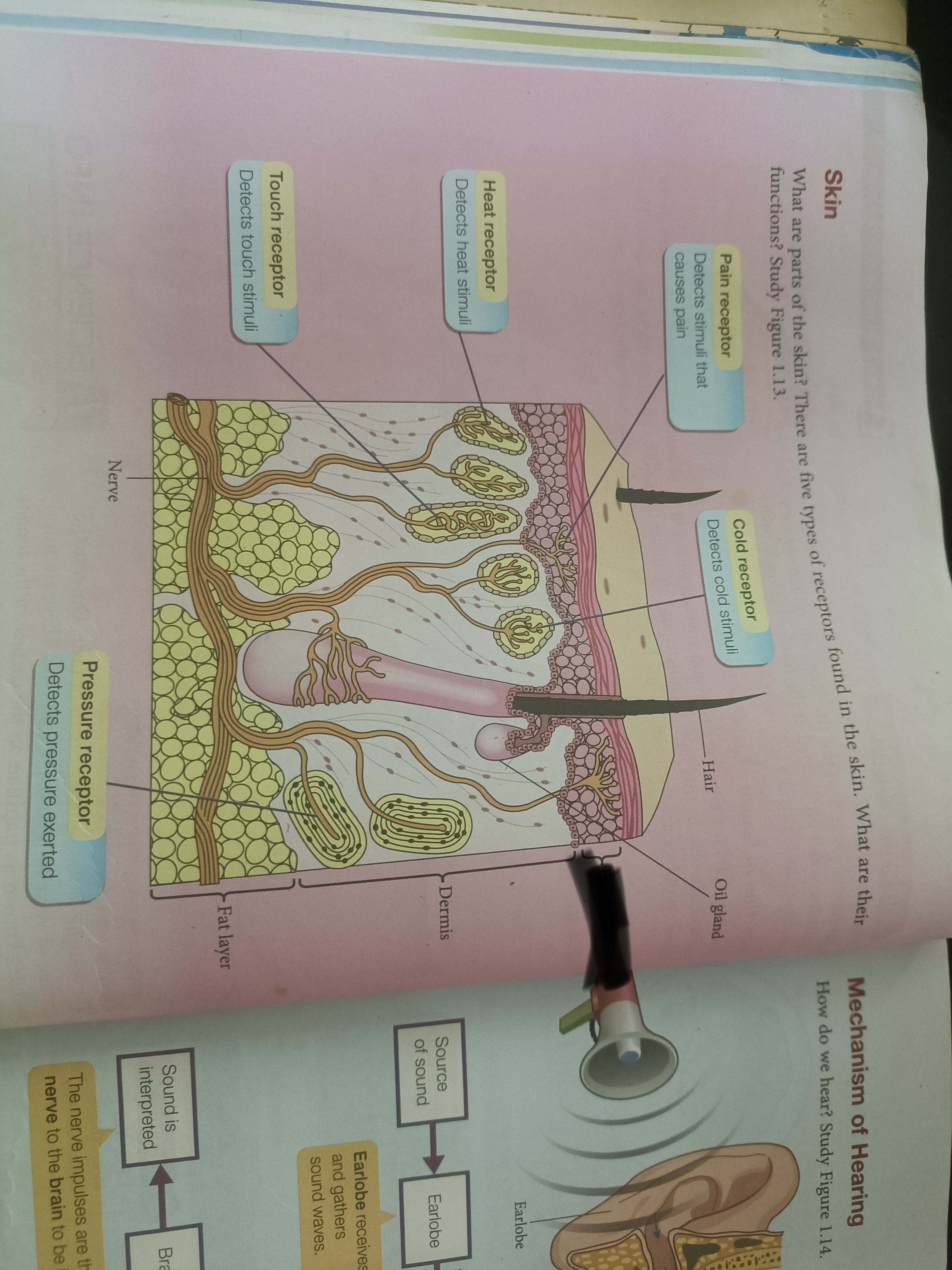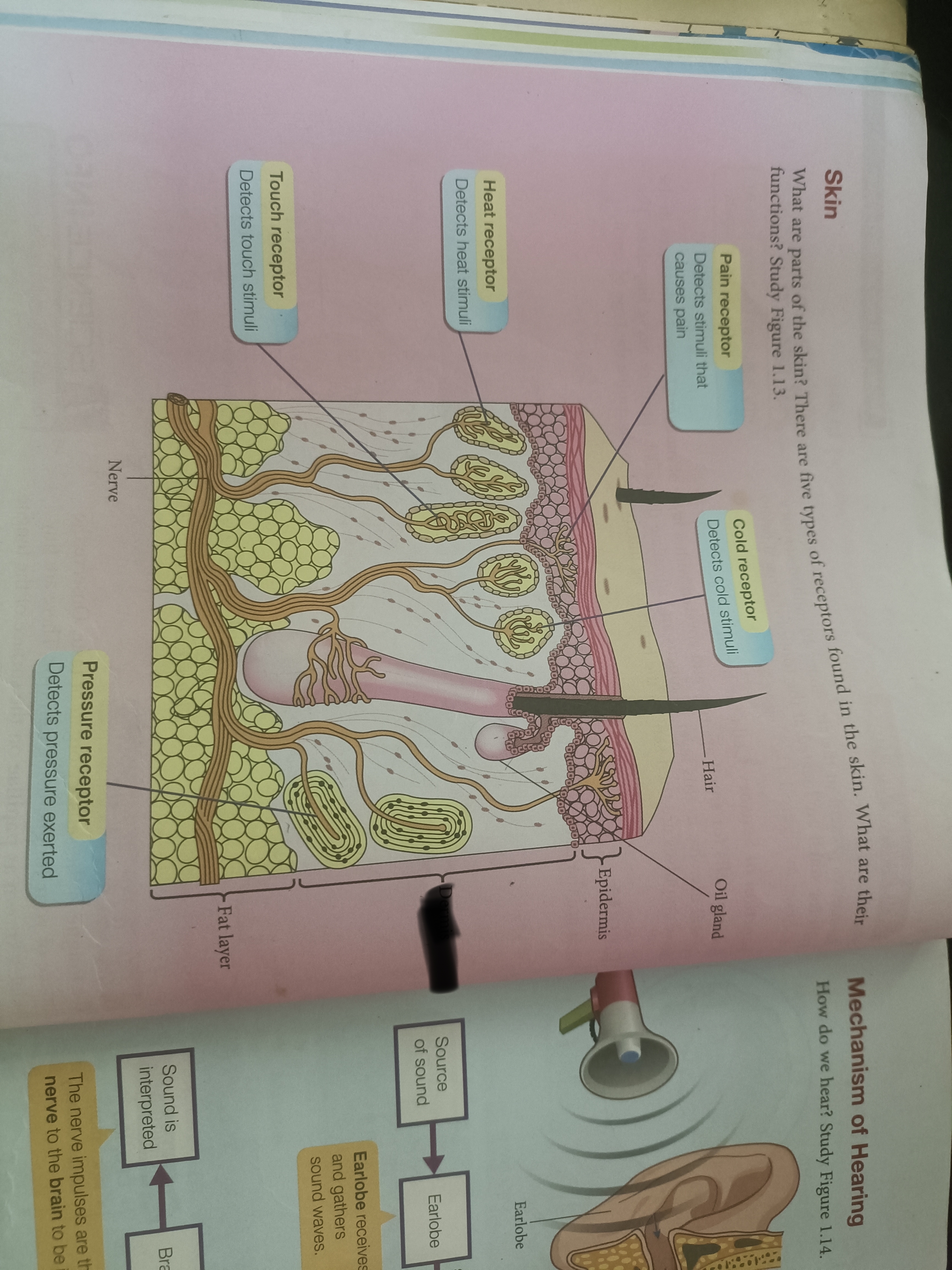1.1 Human nervous system
1/52
There's no tags or description
Looks like no tags are added yet.
Name | Mastery | Learn | Test | Matching | Spaced |
|---|
No study sessions yet.
53 Terms
What does Human Nervous System consists of?
1.peripheral nervous system (cranial nerve 12, spinal nerves 31)
2.central nervous system (brain,spinal cord)
What are function of Human Nervous System? (5)
1.controls and coordinates organs and all the body parts
2.detects stimuli
3.sends information in the form of impulses
4.interprets impulses
5.produces appropriate responses
how many responses that human body does?
2, voluntary action and involuntary action.
What is voluntary action?
Are conscious actions and conducted under one's will . All voluntary actions are controlled by the brain
State 3 example of voluntary action.
Reading
Writing
Jogging
What is the pathway of impulse from affector to the affector? (VA)
stimulus--affector--nerve impulses--brain--nerve impulses--effector--response
What is involuntary action?
actions that occur immediately without conscious control or prior thoughts
What are involuntary action are classified into? (List 3 examples)
1.involving medulla oblongata- breathing,peristalsis,heartbeat
2.involving spinal cord (reflex action)- sneezing, withdrawing hand from hot object
What is the pathway of impulse from affector to effector? (IA)
stimulus--affector--nerve impulse-spinal cord--nerve impulse--effector--response
What are the 5 human sensory organ?
1.eye (sight)
2.nose (smell)
3.skin (touch)
4.ear (hear)
5.tongue (taste)
function of suspensory ligament
strong fibres which hold the eye lens in its position
Conjunctiva
Transparent membrane which protects the front part of the sclera
Sclera
Strong layer that maintains the shape of the eye and protects it
Eye lens
Transparent and elastic convex lens which focuses light onto the retina
Cornea
Transparent layer which refracts and focuses light onto the retina
Iris
The coloured part of the eye which controls the size of the pupil
Retina
Layer containing photoreceptors which detects light and produces nerve impulses
Yellow spot
Part of the retina which is most sensitive to light as it had many photoreceptors
Pupil
Opening in the center of the iris which controls the quantity of light entering the eye
Choroid
Black layer that prevents reflection of light in the eye and supplies oxygen and nutrients to the eye
Optic nerves
Nerve fibres which carry nerve impulses from the retina to the brain to be interpreted
Blind spot
Part of the retina which is not sensitive to light as there are no photoreceptors and an exit point for all optic nerve fibres
Aqueous humour
Transparent fluid which maintains the shape of the eyeball and focuses light into the eye
Vitreous humour
Transparent jelly-like substance which maintain the shape of the eyeball and focuses light onto the retina
Ciliary muscle
Muscle that changes the thickness of the eye lens through contractions and relaxations
what types of photoreceptors in the retina?
1.rod cells
2.cone cells
function of rod cells and characteristics
sensitive to different light intensities including faint light but not sensitive to the colours of light
function and characteristics of cone cells
sensitive to the colours of light under bright conditions.
3 types sensitive to red,green and blue light
how many part do ear have ?
1.outer ear
2.middle ear
3.inner ear
outer ear consists of what?
earlobe and ear canal
function of earlobe
Collects and directs sound waves into the ear canal
Function of ear canal
Directs sound waves into the eardrum
middle ear consists of what?
1.eardrum (thin membrane)
2.ossicles (small three bones)
3.oval window
4.eustachian tube
Function of Eardrum
Vibrates according to the frequency of the sound waves received and transfer the vibrations to the ossicles
Function of ossicles
Amplify sound vibrations and transfer them to the oval window
Function of oval window
Collects and transfers sound vibrations from the ossicles to the cochlea
Function of Eustachian tube
Balance the air pressure on both sides of the eardrum
inner ear consists of what
cochlea(contain fluid), semicircular canals (contain fluid),auditory nerve
Function of Cochlea(contain fluid)
Detects and converts sound vibrations into nerve impulses
Function of Semicircular canals( contain fluid)
Detects the position of the head and help to balance the body
Function of Auditory nerve
Send nerve impulses from the cochlea to the brain to be interpreted
how many sensory cells of smell do we have?
10 millions
where is the sensory cells of smell located?
at the roof of nasal cavity
what is the function of sensory cells for smell
Chemical substances in the air will dissolve in layer of mucus and then stimulate the cells to produce nerve impulses that are sent to the brain to be interpreted to determine the smel
Structure of tongue
Tiny nodules known as papillae on the surface of the tongue. The papillae is covered with hundreds of taste buds. Each taste buds contain 10 to 50 taste receptors
Taste receptors
Detect the tastes of sweet, sour, salty, bitter, umami
Function of taste buds
When food is chewed, part or all the chemical substances will dissolve in the saliva. These dissolve chemical substances will diffuse into the taste buds through the pores and stimulate taste receptors to produce nerve impulses. The nerve impulses are then sent to the brain to be interpreted to determine the type of tastes
5 types of skin receptors
Pain receptor, cold receptor, heat receptor, pressure receptor, touch receptor

What are the thin outer layer known as
epidermis

An inner layer known as
dermis
Parts of the skin that are less sensitive
Knee, elbow
What are the 2 type of layer found in the skin
epidermis and dermis